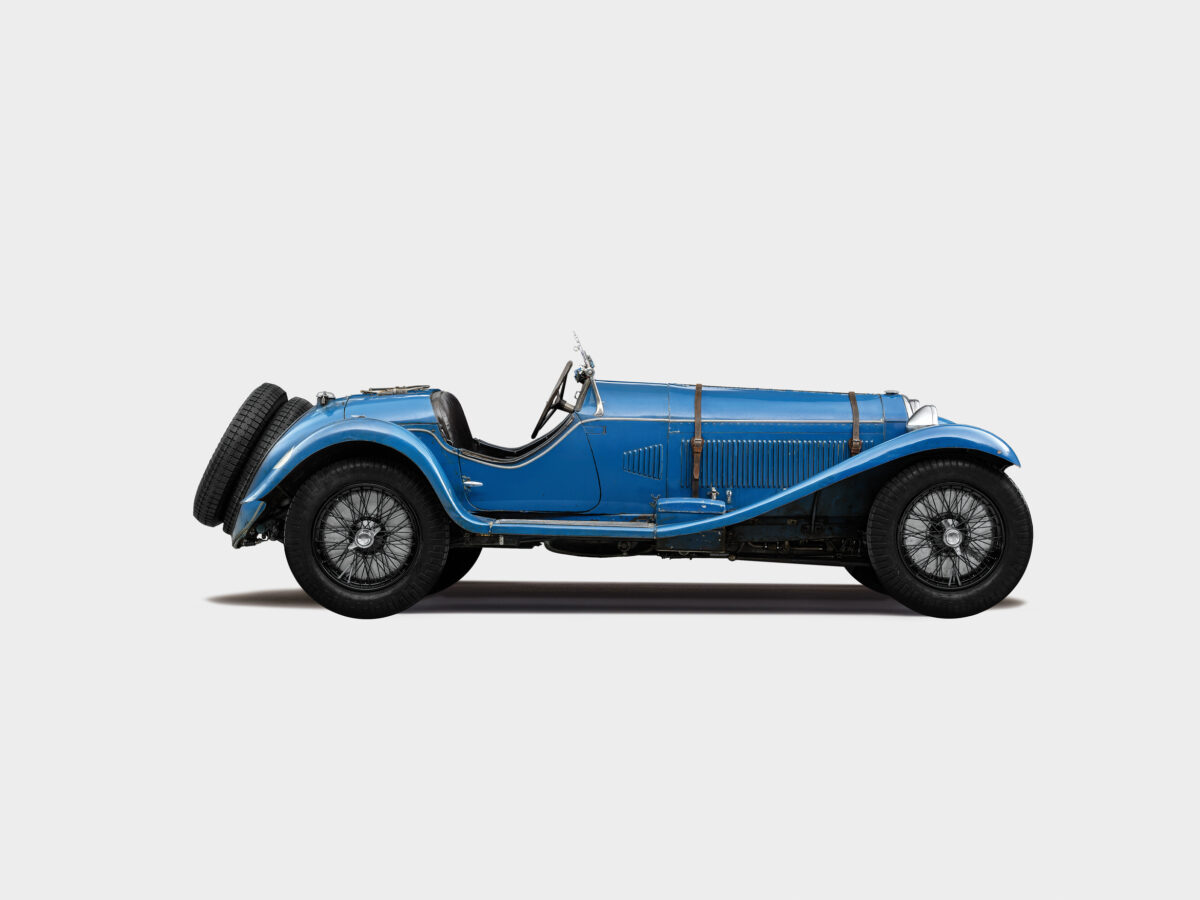Alfa Romeo – 8C 2300 (1932)
Details
- Vehicle Type:
- Spider
- Coach Builder:
- Figoni
- Cylinders:
- Inline 8
- Engine CC:
- 2336
- Entrant
- Private Collection (BE)
Classe G

Legendary engineer Vittorio Jano created the Alfa Romeo 8C 2300 at the tail-end of the 1920s. The supercharged eight-cylinder engine with a double-overhead-camshaft layout and dry sump lubrication consisted of two blocks arranged in tandem with four cylinders each, and camshaft gears mounted amidships. It notched up a string of successes with victories at Grand Prix and sports-car races, winning Le Mans from 1931 to 1934 and the Mille Miglia from 1932 to 1934.
However, racing victories only narrate half the exciting story of the 8C. The chassis was available in a ‘Lungo’ – long – version and the ‘Corto’ – short – chassis. It provided the platform for some of the most sublime and elegant bodies in the pre-war era. Highly renowned coachbuilders such as Touring, Zagato, Brianza and Figoni ranked among the creative geniuses behind the inspiration of sophisticated coachwork. This 8C 2300 is one of only ten Alfa Romeo 8C road cars bodied as a Spider with Figoni coachwork. The Alfa is likely to have been sold originally to one Mr Weinberg for campaigning in the Paris-Nice Rally in 1933 and 1934. In 1935, Count François de Bremont was at the wheel competing in the Grossglockner hillclimb with notable success. Legendary Ferrari importer for North America, Luigi Chinetti, sold the Alfa to the father of Henri d’Autichamp – claiming that it had been prepared for Le Mans. He in turn gifted the Alfa Romeo to his son, a
naval academy graduate, for his 21st birthday in 1937. The proud young owner served in the Navy in Asia during the Second World War and the car was hidden away in a barn during this period.
After the end of hostilities, it underwent sparing use until the early 1970s before being garaged, though oiled and turned on a regular basis. Owned by the same keeper for 77 years, it seems beyond belief that an original example of one of the greatest pre-war cars could remain unknown until the 21st century, surviving in authentic original condition hidden away in France. When Henri d’Autichamp was 98 years old, the Alfa was finally revealed in 2014.
